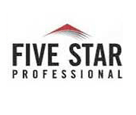Getting A Mortgage For The Self-Employed Borrower
General Guidelines for Self-Employed Borrowers
Most mortgage companies underwrite their loans to guidelines established by the Federal National Mortgage Association (Fannie Mae), the Federal Home Loan Mortgage Corporation (Freddie Mac), the Federal Housing Administration (FHA), or the Veterans Administration (VA). Each of these organizations shares similar underwriting guidelines for self-employed borrowers. In addition, some lending institutions have non-standard sources to draw on for the purpose of making loans to borrowers who do not specifically fit these guidelines.
Listed below are some of the standard guidelines that pertain to employment and income.
- Two or more years of self-employment are required (less than two years may be acceptable if the borrower has had at least two years' previous employment or a combination of one year's employment and formal education or training in a related occupation. Less than one year of self-employment is generally not acceptable.
- Borrowers are considered self-employed if they own 25% or more in a business (detailed information is provided later).
- A two-year minimum average income is needed to determine qualifying income. This is done to even out fluctuations common to self-employed borrowers.
- A positive overall economic outlook in the area for the particular type of business is considered.
There should be no significant decline in income over the period analyzed (an exception to this is discussed under "Things to Remember").
Questions & Answers
1. Are self-employed borrowers qualified differently than salaried borrowers?
Self-employed borrowers are evaluated the same way salaried borrowers are-by determining if the borrower has sufficient income to support the mortgage payment and a willingness to repay all debt, evidenced by a credit report. However, the methods used in the analysis of the self-employed borrower's income are different.
In most cases, a salaried borrower's gross salary is used for qualification. This method is not adequate for the self-employed because the daily operation of the business must be supported by gross receipts along with income to the owner. This requires analyzing the borrower's federal tax returns and other schedules, depending on the type business, to determine net income to the borrower.
The growth, viability, and stability of the business field is also critical in determining the ability of the borrower to meet on-going obligations. The length of time self-employed and overall experience in the field must be considered. Because of the subjective nature of underwriting these loans, it is important for the borrower and the home loan specialist to put together a narrative along with documentation to support the income claim needed for the transaction.
2. Who needs to be qualified as a self-employed borrower?
Typically, borrowers who are receiving variable income which they wish to use as "qualifying income" must have their tax returns reviewed. This includes sole proprietors, borrowers owning 25% or more of a partnership, corporations or "S" corporations, commissioned salespeople (even though they may receive W2's from their employer), and people who receive annual 1099's to substantiate their income.
3. What documents are required from the borrower?
The type of business the borrower has will determine the documents needed. Documents needed for different business structures are listed below.
Sole Proprietorship
- U.S. Federal 1040 with all applicable schedules attached
- Schedule C (Profit & Loss from Business)
- Schedule D (Capital Gains & Losses)
- Year-to-date Balance Sheet and Profit & Loss Statement
Partnerships (General and Limited)
- U.S. Federal 1040 with all applicable schedules attached
- Schedule E, Part II (Income or Loss from Partnerships)
- Schedule K-1 1065 (Partner's Share of Income, Credits, Deductions, etc.)
- Form 1065 (U.S. Partnership Return of Income) with all applicable schedules attached
- Year-to-date Profit & Loss Statement
- Partnership Agreement (may be required)
S Corporation
- U.S. Federal 1040 with all applicable schedules attached
- Schedule E, Part II (Income or Loss from S Corporations)
- Schedule K-1 1120S (Shareholders' Share of Income, Credits, Deductions, etc.)
- Form 1120S (U.S. Income Tax Return for an S Corporation) with all applicable schedules attached
- Year-to-date Profit & Loss Statement
Corporation
- U.S. Federal 1040 with all applicable schedules attached Form 1120 (U.S. Corporate Income Tax Return) with all
applicable schedules attached Year-to-date Profit & Loss Statement
4. Is a minimum down payment required for self-employed borrowers?
There are several new loan programs available today. Lenders are doing their best to qualify people with the lowest rates, lowest down payment, highest qualifying ratios, and the fewest verifications and documents. Most loan programs have the same requirements for different types of employment. Programs are available for first-time home buyers, move-up buyers, or investors-regardless of their employment. However, some loan programs require more strict guidelines for self-employed borrowers. Consult me for specific details.
5. What if a borrower can't qualify because tax write-off amounts decrease his new income too much?
This is a common problem among self-employed borrowers. They are making enough money to pay the new mortgage and they have had steady income for years, but tax write-offs lower their reported income. Despite their income, they get penalized when they want to buy a house. They don't qualify! Lenders look to see if the borrower has enough independent income to pay the mortgage and other debt obligations. New income from their tax return is not the final determining factor. The tax returns need to be reviewed and analyzed carefully. Some tax write offs can be "added" back to the new income. If the new amount does not qualify the borrower, no income verification loans may be an option. Consult me for loan guidelines.
6. How many tax returns should be used to arrive at the average qualifying income?
It's best to use two years of tax returns. This will stabilize the fluctuations in cash flow that may occur due to the normal ups and downs in many businesses. If an analysis of tax returns shows that the applicant has a pattern of reasonable increases in income each year, it makes sense to use the most recent year's tax return alone.
A reasonable increase would be in the range of 10 to 20% per year. An increase of 40 to 50% in one year over the past year is not a reasonable increase and may well represent some sort of windfall to the business that may not be maintained over the long term. A 24-month average would then be more logical to stabilize the income. Remember, common sense prevails in most of these decisions.
7. What about newly self-employed applicants?
Newly self-employed applicants represent a special situation. The clich�, the first year you take all your clients with you, and the second year you go out of business, rings true with many underwriters. It is our job to make a very strong case to the contrary. Verifying previous employment helps to determine a track record of skills, length of employment, and work attitude. The previous income helps establish the financial history, as well as indicates whether the move to self-employment represents logical progress or a complete departure from an established profession.
Things to Remember . . .
1. If the borrower recently had a bad year but had previous successful years, qualification is still possible.
2. A bad year may result from several causes-divorce, death, or medical illness. This could happen to anyone at any time. If the business had previous successful years, don't assume the individual can't be qualified.
3. If financial statements are required in the middle of a tax year, encourage the borrower to start with a year-to-date statement of the Profit & Loss. This statement does not need to be audited if the income is no more than 25% greater than the previous year. If the income is 25% greater than the previous year, an audited statement will be required.
How to Begin
Contact a qualified Home Loan Specialist who is familiar with analyzing tax returns to qualify self-employed people. Have the last 2 to 3 years' tax returns and year-to-date figures ready for the home loan specialist. Ask the home loan specialist exactly what documents you will need for the borrower's particular case. There is an art to getting these loans approved, so not everyone will be able to help you . . . GIVE US A CALL!!
Conclusion
You must be willing to spend some time working with us to qualify if your particular situation does not fall within the guidelines. We are willing to spend the extra time and effort to correctly qualify self-employed people. Careful review of tax documents cannot be done accurately over the phone. There is too much room for error. Qualifying self-employed borrowers correctly-the first time-will save everyone time, money, and frustration.
We work aggressively to qualify people. Our variety of loan programs allows us to fit the cash flow and ownership needs for each borrower. We specialize in qualifying self-employed borrowers and can provide you the best opportunities for loan approval.
The following examples provide an overview of business structures, tax forms and schedules.
Business Structures Defined
Sole Proprietor
A sole proprietorship is a business which is carried on by a single person. A sole proprietor has the freedom to sell any portion of the business at any time, carries the entire load of the business, and is exposed to unlimited personal liability.
Partnership
A partnership is an organization of two or more persons who pool their money, abilities, and skill into a business. Profit or loss is divided among the partners in a predetermined agreement. There are few formal restrictions on the management of the business; a partner in a partnership is exposed to unlimited liability.
Limited Partnership
A limited partnership is an entity in which one or more persons with unlimited liability (general partners) manage the partnership and one or more other persons contribute capital (limited partners). The limited partners have no right to participate in the management and operation of the business.
Corporation
A corporation is a legal entity chartered by a state government. It is separate and distinct from the persons who own it. It can sue, be sued; hold, convey, and receive property; and enter into contracts under its own name.
S Corporation
A Subchapter S Corporation has a limited number of stockholders and elects not to be taxed as a regular corporation. Shareholders include in their personal tax returns their pro rata share of capital gains, ordinary income, and so on. S Corporations avoid double taxation which allows the expense to be deducted by the S Corporation without the officers having to pick up money for these expenses in taxable compensation.
Call Geoffrey Davis, The Frisco Mortgage Guy today 214-529-9622
Frisco Mortgage Guy® is a registered US trademark owned by FriscoMortgageGuy.com, LLC.
FriscoMortgageGuy.com™ is an independently owned marketing company.
Geoffrey Davis is its owner and is licensed by the Nationwide Mortgage Licensing System #206192
Geoffrey Davis is an Independent Life Insurance Agent with Davis Family Insurance, LLC
© Copyright
All Rights Reserved






